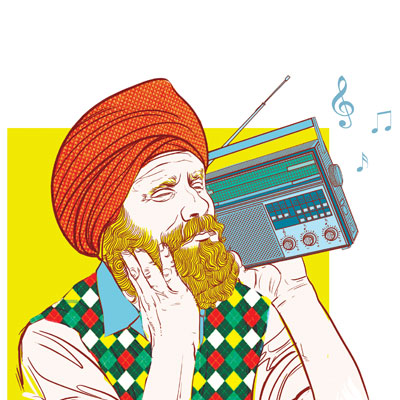
The radio is not only a window to the outside world but also a means of family communication and education in rural Haryana. Gargi Gupta looks at community radio stations and their power to transmit change
The power of the media passes us by in big cities with the multitude of television channels, newspapers, magazines, social media and the wide world of the Internet clamouring for attention. But in rural Mewat — next door to upscale Gurgaon in Haryana but a world apart in human development indicators — the good old radio still has the ability to change lives for the better.
The power of the media passes us by in big cities with the multitude of television channels, newspapers, magazines, social media and the wide world of the Internet clamouring for attention. But in rural Mewat — next door to upscale Gurgaon in Haryana but a world apart in human development indicators — the good old radio still has the ability to change lives for the better.
Ask 13-year-old Shaheen who was taken out of school by her father. She wanted to study but didn't have the courage to tell her father — at least to his face. So she recounted her wish during a broadcast of Galli Galli Sim Sim (GGSS) on the local community radio station, Radio Mewat. When her father heard it, he was touched and decided to let her continue going to school.
We all know GGSS as a television programme, the Indian version of popular American series Sesame Street, featuring muppets Chamki, Googly, Grover and Boombah whose fun and games contain lessons in basic educational and life skills. But it is a radio programme for nearly 200,000 children in remote, backward areas who listen to the 10 community radio stations across India — Radio Mewat being one of them — that are part of The Radiophone Project. The Project, started in 2011, leverages the power of radio to help these children learn better. The programming, thus, incorporates easy lessons in language and maths, advocates good hygiene practices, health and nutrition, environmental awareness, and social skills.
Ever since the government allowed community radio stations (CRS) to operate in India in 2006, it has been used by a number of social organisations to transmit the message of change in areas like education, health, women's empowerment and agriculture. Alfaz-e-Mewat, one of the 10 station partners in The Radiophone Project, is an initiative of SM Sehgal Foundation, a charitable trust which has been working with farmers in this area for many decades.
The good thing about community radio is that it has space for community feedback — government laws mandate that a certain percentage of programmes must involve or be made by locals. The Radiophone Project ensures this by getting local participation in the vox pop segment at the end of each segment, where people can call and record messages that are later played on air. Each 30-minute GGSS segment also has a part produced locally by local 'reporters' which highlights issues of interest to them. This has empowered more youth from these rural areas to work as 'reporters' on these stations. Neetu, who is programme assistant with Waqt Ki Awaaz, a community radio station which covers Metha block in Kanpur Rural district, speaks about how she gained confidence by speaking on air. "It has made us stars locally. Wherever I go, I am addressed by name and told about things they would like me to talk about on radio."
The Radiophone Project adds an innovative aspect to community radio — the use of mobile telephony to make radio an interactive experience for listeners. As part of this, listeners who may have missed the twice daily broadcasts or live in areas where there are no radio signals can call a toll-free number and listen to GGSS. Thanks to this facility, called Radio over Telephone, Ramchandra, who lives in Tigra, a village which does not get the signals of Gurgaon ki Awaaz, can get his children to listen to GGSS on his mobile phone.
To children who have no access to meaningful entertainment made for them, community radio has made a difference and given them a platform to get their voice heard, as with Shaheen. "The girls never used to go to school because their job was to herd the cows. After the Radiophone programme, the community came together and appointed one person to herd everybody's cows so that the girls can go to school. I call it cowpooling," says Sashwati Bannerjee, managing director of Sesame Workshop India, the production company that makes GGSS in India.
Conservative Mewat has a female literacy rate of less than 40% because girls here are seldom allowed to stay on in school. They remain at home under the watchful eyes of their menfolk until they're married off.
For girls like Shaheen, the radio has become more than just their window to the world outside.
It's also brought about other changes. Jhankhan Numberdar in Gangwani village says his three children — two daughters and a son — have become very conscious about washing their hands before every meal after listening to GGSS. "Now they wash their hands after nashta, and even if they've just had a mithai. They have become careful about the importance of fresh, clean food, getting up on time to go to school and dressing neatly. They even tell us about these things. I am especially happy that they have even stopped watching TV now," he says.
Source: http://www.dnaindia.com/